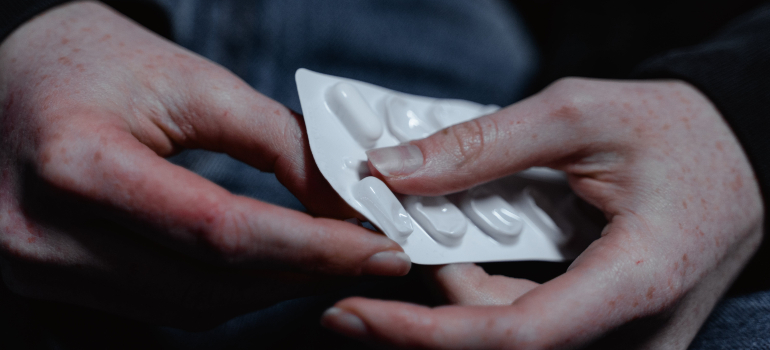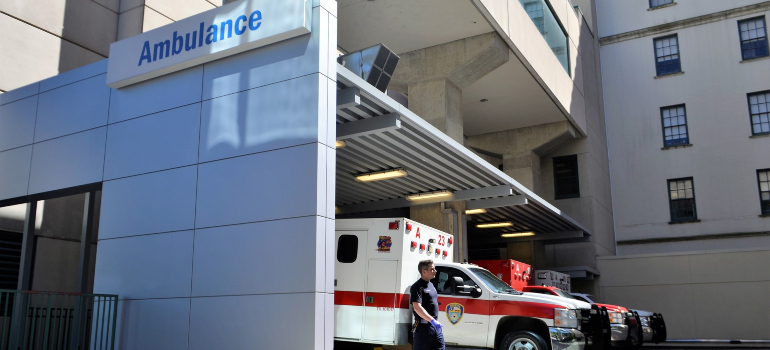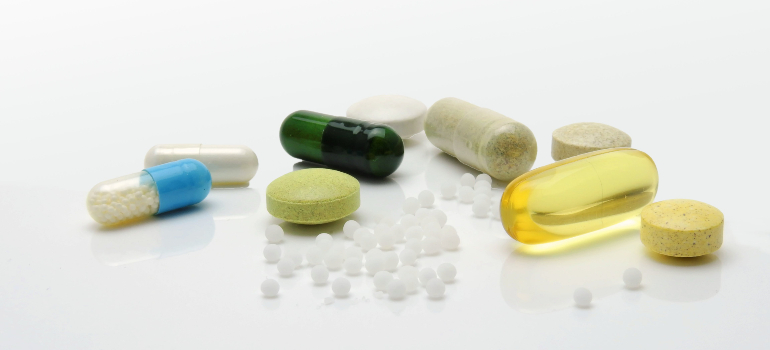Opioid overdose prevention is crucial today, especially in areas like West Virginia (WV), where the impact of the opioid crisis is significant. Understanding this crisis, its causes, and prevention methods is key to saving lives. Awareness of resources, including rehab centers in West Virginia, is vital for those seeking help and support in overcoming opioid addiction.
The Opioid Crisis and Its Impact in WV
The opioid crisis represents a significant public health challenge in West Virginia (WV). Characterized by high rates of opioid use and consequent fatalities, this crisis extends beyond individual health issues, deeply affecting communities at large. In WV, the crisis has led to a surge in healthcare demands, stretching medical facilities and professionals to their limits. The widespread nature of opioid misuse and overdoses strains not only the healthcare system but also impacts the social fabric of communities.

Families across WV bear the brunt of this epidemic. The crisis has led to an increase in the number of children entering foster care, disrupted family units, and heightened emotional distress among loved ones. It also impacts workplace productivity and contributes to a rise in unemployment rates, further exacerbating economic challenges in the region. The opioid crisis in WV mirrors a broader national issue but is particularly acute due to factors like higher prescription rates in the state and socioeconomic conditions that foster substance misuse.
Definition and Types of Opioids
Opioids are a diverse class of drugs primarily used for pain management, but they also carry a high potential for dependence and overdose. This category includes both legal prescription medications and illegal substances. Understanding the various types of opioids is a fundamental aspect of opioid overdose prevention.
Here is a list of common opioids:
Prescription Opioids:
- Oxycodone (OxyContin, Percocet)
- Hydrocodone (Vicodin, Norco)
- Morphine (Kadian, Avinza)
- Codeine
- Fentanyl, which is synthetic and more potent
Illicit Opioids:
- Heroin
- Illegally made Fentanyl
While prescription opioids are intended for pain relief, their misuse can lead to addiction. Illicit opioids, like heroin, are often used for their euphoric effects but carry a high risk of overdose. Fentanyl, whether prescription or illicitly manufactured, is particularly dangerous due to its high potency. Education on the types and effects of opioids is a vital component in the strategy for opioid overdose prevention.
Also, substance abuse treatment centers offer specialized programs for treating different types of addiction, such as:
How Opioids Affect the Brain and Body
Opioids work by binding to specific receptors in the brain, spinal cord, and other organs. When they attach to these receptors, they block pain signals sent from the body through the nervous system to the brain, thereby reducing the sensation of pain. This mechanism is what makes opioids effective as pain relievers. However, this interaction with the brain’s chemistry can also lead to a feeling of euphoria or intense relaxation, contributing to the potential for misuse and addiction.

Beyond pain relief, opioids can affect the body in various other ways. They can cause drowsiness, mental fog, nausea, and constipation. More dangerously, opioids can slow breathing, a side effect that becomes more severe with higher doses. This respiratory depression is the primary danger in opioid overdose, leading to insufficient oxygen reaching the brain, which can result in hypoxia. Hypoxia can have short and long-term neurological effects, including brain damage or death.
Statistics on Opioid Use and Overdoses
Statistics reveal a concerning trend in opioid use and overdoses, particularly in West Virginia (WV). In recent years, West Virginia has been significantly impacted by the opioid epidemic, with some of the highest rates of opioid-involved overdose deaths in the United States. As of 2024, West Virginia had the highest rate of opioid-involved overdose deaths, with a death rate of 90.9 per 100,000 persons, translating to 1,501 deaths in a single year. This alarming statistic highlights the severity of the opioid crisis in the state and an urgent need for effective opioid overdose prevention strategies.
Despite these daunting figures, there has been a slight decrease in fatal overdoses in West Virginia. Between March 2021 and March 2022, the state reported a nearly 4% decrease in overdose deaths compared to the previous 12 months. Out of these fatal overdoses, nearly 84% involved an opioid, with a significant number of them including synthetic opioids like fentanyl. This decrease is seen as a positive trend, albeit a small one, in the ongoing fight against the drug epidemic.
Furthermore, recent data indicates that West Virginia’s opioid overdose rates are slowly falling to pre-pandemic levels. This improvement is partly credited to the resumption of in-person harm reduction services after the COVID-19 pandemic. The state has also seen success in implementing various measures to expand recovery options, destigmatize substance use disorder, and increase access to naloxone, a medication that reverses opioid overdoses. These efforts have been key in reducing the number of overdose deaths in the state.
The age group most impacted is adults between 25 and 54 years, but there’s a noticeable rise in opioid misuse among younger populations as well. A significant factor in this crisis is the high number of opioid prescriptions; in some years, WV had more opioid prescriptions than residents, a stark indicator of the severity of the issue.
Moreover, the data suggests a link between opioid overdoses and other societal challenges, such as mental health issues and economic struggles, which are prevalent in many areas of WV. This complex mix of contributing factors makes addressing the opioid crisis in WV both challenging and essential. It is clear that targeted and effective opioid overdose prevention programs are crucial in reversing these trends and saving lives across the state.
Signs and Symptoms of an Opioid Overdose
Recognizing an opioid overdose is an important step in opioid overdose prevention. Key signs include shallow breathing, unconsciousness, and a slow heart rate. Additional symptoms that may indicate an overdose are:
- Pale or clammy skin
- Blue or purple fingernails and lips indicating low oxygen levels
- Vomiting or gurgling noises
- Inability to speak or being unable to wake up
- Pinpoint pupils
Prompt identification of these signs can be life-saving. In cases of suspected overdose, it’s essential to act quickly, administer naloxone if available, and seek immediate medical help. Raising awareness about these symptoms in communities, especially in areas with high opioid use, like West Virginia, is crucial for effective intervention and opioid overdose prevention.
Who is at Risk of Opioid Overdose
Anyone who uses opioids, whether for medical purposes or through illicit use, is at risk of an overdose. This risk underscores the importance of opioid overdose prevention. While it’s often assumed that the risk only applies to those with a history of substance abuse, even individuals prescribed opioids for pain management can face the danger of overdose due to factors like improper dosing or prolonged use.
Certain groups are at a higher risk, including those with a history of substance abuse, individuals with mental health conditions, and people living in areas with high availability of opioids. In West Virginia, where opioid misuse is particularly prevalent, this risk is amplified.

In addition, those who have built up a tolerance to opioids and then decrease or stop their usage can be at risk if they relapse and return to using the same amount they previously consumed. This scenario often leads to unintentional overdoses.
Given these risks, the role of drug rehab centers in WV becomes increasingly important. These centers offer vital resources for addiction treatment and recovery, playing a key role in opioid overdose prevention. They provide a safe environment for detoxification, therapy, and support, helping individuals at risk of opioid overdose to reclaim control over their lives and health.
Preventing an Opioid Overdose
Opioid overdose prevention involves safe practices such as strictly adhering to prescription guidelines and avoiding the combination of opioids with other substances. Following the prescribed dosage and frequency is essential to prevent accidental overdose. Mixing opioids with substances like alcohol or benzodiazepines greatly increases the risk of a life-threatening overdose.
Education on safe medication use is essential. Healthcare providers should inform patients about the dangers of misuse and the signs of an overdose. This education is a crucial step in preventing accidental overdoses.
In addition to these practices, the role of substance abuse treatment in WV is integral to opioid overdose prevention. Substance abuse treatment centers offer crucial support to those struggling with opioid dependency. These centers provide services like medical detoxification, counseling, and long-term recovery strategies. These treatments are key in reducing overdose risks and supporting the health and well-being of individuals and the wider community.
What is an Opioid Blocker for Overdose?
Naloxone, an opioid blocker, is a life-saving medication that rapidly reverses the effects of an opioid overdose, thereby playing a vital role in opioid overdose prevention. When administered, it can restore normal respiration to a person whose breathing has slowed or stopped due to opioid overdose. It’s available in various forms, including nasal sprays and injectable solutions, making it accessible for emergency use by both medical professionals and laypersons. The widespread distribution and training in the use of Naloxone are key aspects of public health strategies aimed at reducing opioid-related fatalities, reflecting its critical role in immediate overdose response efforts.
How and When to Use Naloxone
Administer Naloxone at the first signs of opioid overdose, such as:
- difficulty breathing
- extreme drowsiness
- inability to respond
Quick action is essential, as delayed administration can lead to severe consequences, including brain damage or death. Naloxone can be administered by anyone trained in its use, making it a valuable tool in community settings. It’s especially important in areas with high opioid use, where bystanders might be the first to respond in an overdose situation. The administration of Naloxone, coupled with immediate medical attention, is a cardinal component in opioid overdose prevention strategies.
Side Effects of Naloxone
While Naloxone is generally safe and an important tool in reversing opioid overdoses, it can induce withdrawal symptoms in individuals who are opioid-dependent. These symptoms may include:
- nausea
- vomiting
- sweating
- agitation
However, the benefits of using Naloxone in a life-threatening overdose situation far outweigh these risks. Medical professionals often monitor individuals after Naloxone administration to manage any withdrawal symptoms effectively. Education about these side effects is important for those administering Naloxone.
What to Do in Case of an Opioid Overdose
In the event of an opioid overdose, immediately administering Naloxone and calling for emergency services are crucial steps. Naloxone can be life-saving, but it’s not a substitute for medical care. After administration, it’s important to keep the individual comfortable and under observation until help arrives, as the effects of Naloxone can wear off, potentially leading to a return of overdose symptoms. This quick and informed response is a key component in reducing opioid-related fatalities and emphasizes the importance of widespread knowledge and availability of Naloxone.
When to Call Emergency Services

In any suspected overdose situation, it’s vital to call emergency services right away. Even if Naloxone is administered, professional medical assistance is necessary to ensure the individual’s safety and well-being. Emergency responders can provide essential care and potentially prevent severe consequences from the overdose. Furthermore, emergency services play a pivotal role in connecting individuals with longer-term support and resources for addiction treatment, including medication-assisted treatment and counseling, which are crucial for ongoing recovery and opioid overdose prevention.




